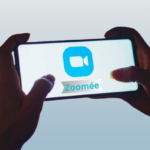If you know the art of proofreading like the back of your hand, you can transform a good narrative writing into an excellent one. Imagine spending hours writing your paper, only to lose out on grades because of spelling and grammatical errors. Seems unfair, doesn’t it? Well, if you’re going to put so much effort into researching and writing the content, surely you can spare some time to proofread it as well.
Hiring an essay proofreader is a great option if you’re running out of time. If you rush the checking, there’s a high chance you won’t be able to detect many errors. But a professional won’t make the same mistake. However, if you’re on a tight schedule and don’t even have the time to select a professional or wait for them to review your work, then you can either learn the proofreading techniques yourself or use a tool.
Best Proofreading Techniques to Follow
If you check narrative essay samples on MyAssignmenthelp.expert, you’ll barely find any mistakes in them. That’s because the papers are written by top-notch scholars. They have mastered the art of proofreading effectively. Hence, they can submit 100% error-free content without fail. If you’re wondering what techniques they follow, read on.
1. Take a break between writing and proofreading
Experts always recommend that you take a break for a day or two between completing the writing and starting the proofreading. If you’re pressed for time, start proofreading after an hour or two. You need to distance yourself from the text because your familiarity with the text makes it harder to detect mistakes. Even if there are glaring spelling or grammatical errors, they’ll slip past your notice.
Fatigue can also affect your ability to notice mistakes. Many people underestimate the effort that it takes to write a high-quality narrative essay. Once the mental fatigue sets in, proofreading becomes 10 times more difficult. So, take a break. Give yourself time to forget what you’ve written before you attempt to proofread it.
2. Change the font of your paper
Sometimes, all you need is to view your writing from another angle – or font, to be more precise. This is a simple hack that is meant to bring back your focus to the writing. If you’ve typed the content on your computer, just change the font and try checking it again. You can increase the font size and try different colors as well. Just make sure you don’t choose something too bright or less visible on a white page.
Once you’ve completely transformed the way your text looks, try reading through it again. There’s a high chance you’ll be able to detect errors you never noticed before.
3. Take a printout and use highlighters
Trying to proofread an essay from a computer can be challenging since many students get headaches from staring at their screens for a long time. Besides, it’s not good for your eyes either. So, the best solution is to take a printout of your essay. You can change the font style, color, and size beforehand if you think it will help you detect the errors easily.
Once you have a copy of the essay, review every sentence thoroughly. Make notes on the side regarding structuring, rearrangement, common errors, punctuation alternatives, etc. If you’re unsure about a particular segment, highlight it so you can get back to it later.
4. Break the text into smaller segments
A simple hack to make the proofreading task less daunting is to break it down into smaller segments. There’s no need to review the entire content in one go. Take your time and tackle each paragraph at a time. Go through the sentences to check for grammar errors, review the use of punctuation, and keep an eye out for spelling errors. If you’ve used synonyms for certain words, make sure that they make sense in that particular context.
5. Read your paper aloud
Reading your narrative essay aloud is one of the best methods to identify errors. Sometimes, things sound logical in your head. But when you read the text aloud, you realize that certain points might seem more logical if they were arranged differently. Besides, this technique works wonders to find errors.
The moment you come across a mistake in your paper, highlight it so you don’t have to search for it later. Don’t break the flow of reading. You can also ask one of your peers to read your paper aloud for you so you can make notes of things that you can improve in the content.
In summary,
Proofreading is a crucial step in the narrative essay writing process. Since skipping this can be detrimental to your paper quality, it’s best to follow the same techniques used by experts to review your content. Keep using online proofreading tools as a last resort since they don’t always provide accurate checking.











